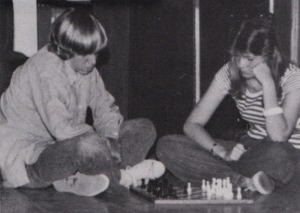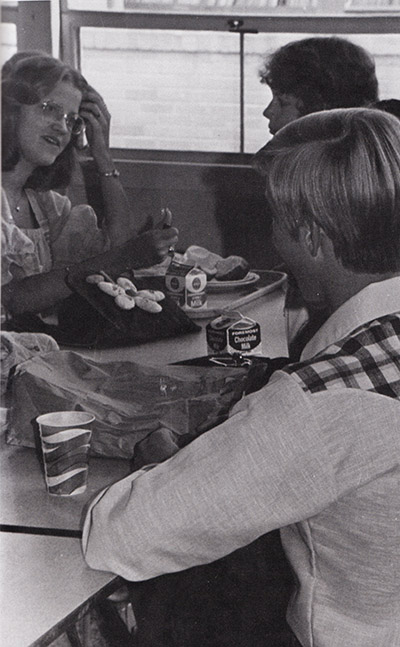



Cost of Leaving
While the approach of graduation meant many things to different people, to all seniors it meant dishing out the dough. From the summer before to the summer after the senior year, students were paying for all those “seniory” things.
It started with the senior ring, averaging $60 to $70. Then came senior portraits. Most seniors spent $30 or more.
From the beginning of that final year, seniors prepared for the big day, graduation. Before they had time to realize they were seniors, they were ordering invitations. Some managed to escape with only a $5 to $6 charge, but the cheapest package was $9.35 and the most expensive was $26.55. And many ordered extras and bought a memory book for $3.20, a senior key for $4.50 to $6.50 and a picture album for $4. In addition, a cap and gown, which was required for uniformity of color, meant another six bucks.
Planning for a college education was also costly. ACT and SAT tests cost $6.50 to $7.50, which included sending the results to three colleges. Transcripts to accompany applications were priced at $1 after the first one.
As graduation drew nearer, so did another big event, the Senior Prom. The cost for this wing-ding could vary sharply. Tickets, which came out of the guy’s pocket, ran $5 a couple. Dinner, depending on how cheap the guy was, ranged from $3 at McDonald’s to $20 at the Farmer’s Daughter. Then the poor fellow had to rent a tux, another $15 to $40, and buy a corsage for his date. If he went the daisy route he spent about $2.50; if he was extravagant he paid $10 for an orchid.
A new dress for the girls could be made for as little as $20, but many preferred to buy one read made for at least $50. And her date had to have flowers too, a boutonniere for $1.50.
If you added it up, the bill for the senior year came to $260. But most seniors agreed that the memories were worth every cent.
— 1976 Amethyst

































